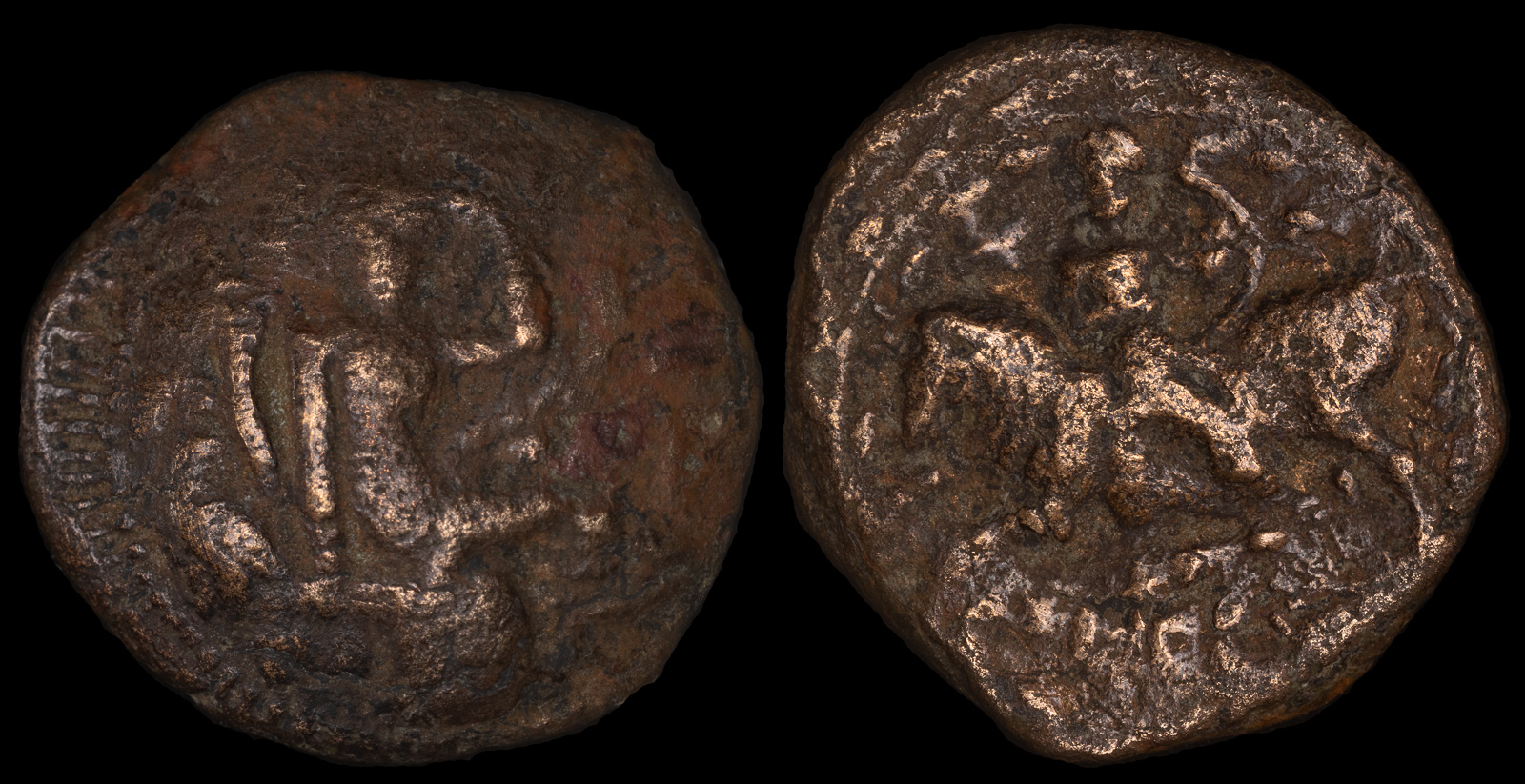Europa
View All Tags
Europa, intrigued by the beautiful bull, climbed onto its back. Seizing the opportunity, Zeus—still in the form of the bull—suddenly took off, swimming across the sea with her on his back. They traveled to the island of Crete, where Zeus revealed his true identity to Europa. On Crete, the two became lovers, and Europa eventually gave birth to Minos, Rhodus, and Sarpedon, who would become significant figures in later Greek myths. Minos, in particular, would go on to become the legendary king of Crete, associated with the establishment of the Minoan civilization and the construction of the Labyrinth to house the Minotaur.
Europa’s story is rich with symbolic elements. Her abduction and journey to Crete are often interpreted as metaphors for the spread of civilization, as the Cretans were thought to be among the earliest Greeks to develop advanced cultural achievements.

Crete, Gortyna
Circa 250-221 BCE
Æ 17mm 4.1g
Europa seated right in tree, lifting her drapery; to left, eagle standing left, head right; border of rays /
Europa seated right, lifting her drapery, on bull running left; all within wreath.
Jackson pl. 12, 2; Svoronos, Numismatique 109; Joy 466; SNG Copenhagen 447; BMC 45